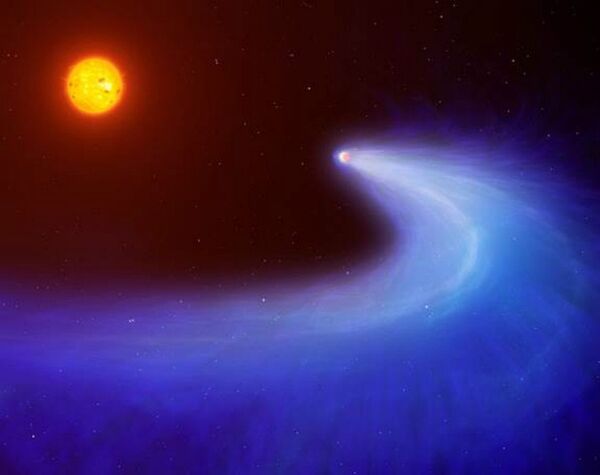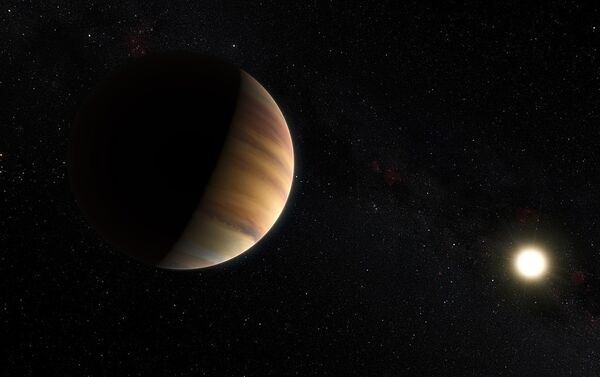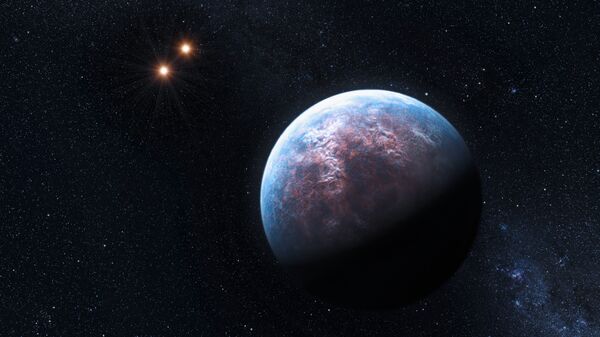In a new extensive study published in the journal Nature Astronomy, a team of astronomers from Canada, the UK, and the US has managed to break into different types of atmospheres observed on so-called Hot Jupiters - multitudes of giant gas exoplanets that orbit so close to their stars that they reach phenomenally high temperatures.

Given their enormous size and comparatively short orbit perimeter, they are easily detectable by top-notch telescopes like Kepler, for instance. The astronomers created a full-fledged cloud atlas for them, detailing which type of clouds and atmospheres we’ll observe when we monitor different Hot Jupiters.
According to the authors of the study, one of these is aerosol build-up:
"Aerosols are common in the atmospheres of exoplanets across a wide swath of temperatures, masses, and ages. These aerosols strongly impact observations of transmitted, reflected, and emitted light from exoplanets, obfuscating our understanding of exoplanet thermal structure and composition", the team wrote.
The team stressed that coming to grips with the aerosol composition in Hot Jupiter atmospheres will be essential for astronomers when they observe those atmospheres, as well as ones in our Solar System in the future.
“The kinds of clouds that can exist in these hot atmospheres are things that we don't really think of as clouds in the solar system", lead author Peter Gao remarked in a press release.
Exoplanet scientists have tried to understand and explain what they're witnessing, cataloging the droplets they have observed. Throughout the study, they modelled and cataloged aluminium oxides, such as corundum, the stuff of rubies and sapphires. They discerned in the exotic clouds such compounds as molten salt like potassium chloride, silicon oxides or silicates such as quartz, the main component of sand, sulfides of manganese or zinc that exist as rocks on Earth, as well as organic hydrocarbon compounds.
According to Gao, these exotic clouds could be liquid or solid aerosols. The catalogues were adapted from models developed around Earth's atmosphere, and then extended to planets like Jupiter, which has a turbulent atmosphere made up of methane and ammonia clouds.
From there, Gao and the other authors expanded it to include Hot Jupiters, with temperatures reaching 2,500 Celsius (4,600 F).
The study ruled out some of the more exotic cloud types proposed over the past few years, as they appeared too difficult to condense, while silica clouds were found to condense easily, dominating over a pretty wide temperature swath: from about 900 K to 2,000 Kelvin.

They also found that in the hottest of Hot Jupiters, aluminium oxides and titanium oxides condense into high-level clouds, while in exoplanets with cooler atmospheres those clouds form deeper in the planet and are obscured by higher silicate clouds. If the planets are even cooler, those same silicate clouds form even deeper, leaving the upper atmosphere clear.
Now that the models are there, scientists are preparing to measure “the spectral signatures of the clouds themselves” for the first time with the help of the upcoming James Webb Space Telescope (JWST).
However, there is a weak spot in the study, as scientists have admitted dayside-nightside differences haven’t been taken into account.
"A caveat of our study is that, by using one-dimensional models, we do not take into account the three-dimensionality of warm giant exoplanets, which are likely to be tidally locked to their host stars", they explained.
In the years to come, Gao and his team intend to test their model against more exoplanet observations, including supermassive brown dwarfs.



